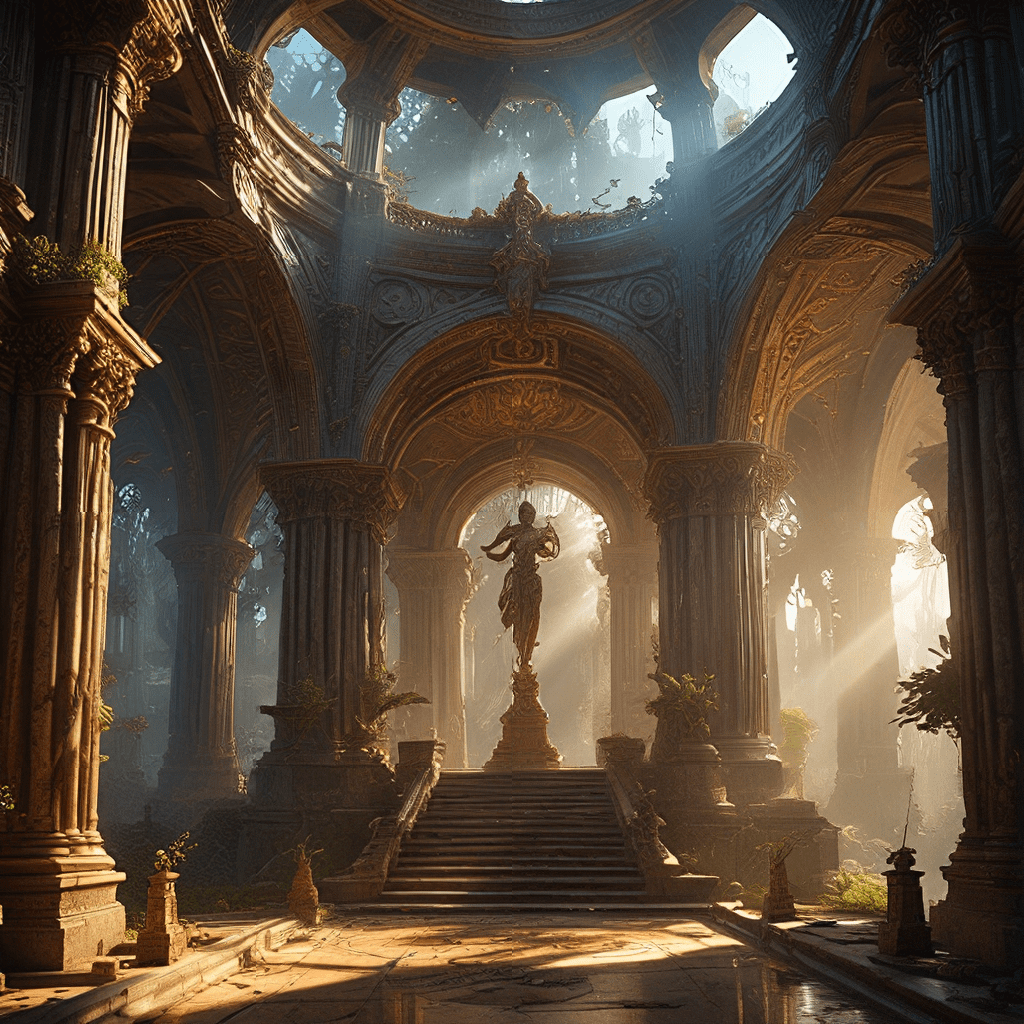The Divine Architect: The Shaping of the World in Egyptian Mythology
In the vast and enigmatic tapestry of Egyptian mythology, the creation of the world unfolds as a profound and enduring narrative, reflecting the ancient Egyptians’ deep connection to the cosmos and the forces that shaped their existence. The story of creation, as told in ancient Egyptian texts, is a compelling tale of emergence from chaos, the birth of gods, and the establishment of order in the universe. This exploration delves into the intricate details of the creation myth, unveiling the roles of key deities, the significance of cosmic principles, and the enduring legacy of this sacred narrative.
1. The Primordial Waters: Nun and Naunet
At the very beginning of time, before the existence of anything, there was only an infinite expanse of primordial waters, a realm of chaos and potentiality. This vast, formless abyss was embodied by Nun, the god of the primeval waters, and his feminine counterpart, Naunet. Together, they represented the raw, unshaped material from which all creation would emerge. This concept of creation emerging from chaos is a recurring theme in ancient mythologies worldwide, reflecting the human desire to understand the origins of existence. The primordial waters, as symbolized by Nun and Naunet, serve as the foundational element, the blank canvas upon which the divine artist would paint the cosmos.
2. The Emergence of Atum: The Self-Created God
From the depths of Nun, the first god, Atum, emerged. He was a self-created being, emerging from the primordial waters without any external force. Often depicted as a self-created being, Atum embodies the very essence of creation, the power to bring forth existence from nothingness. This concept of self-creation underscores the inherent power of the divine, the ability to manifest reality from pure potentiality. As the sole creator, Atum held the universe within himself, poised to bring forth the wonders of the cosmos.
3. The Creation of the World: From Atum to the Ennead
The creation process began with Atum’s act of self-generation. Through various forms of self-stimulation, Atum brought forth the first elements of the world. His tears became the human race, his saliva formed the land, and his breath gave rise to the air. This concept of the world emerging from the body of a single god highlights the interconnectedness of all things, as if the universe itself were an extension of the divine being. However, Atum did not create alone. From his body, he generated the Ennead, the nine major deities of Egyptian mythology. These deities, including Shu, Tefnut, Geb, Nut, Osiris, Isis, Nephthys, and Seth, took on specific roles in shaping the cosmos, establishing the fundamental principles of the universe.
4. The Ennead’s Role in Shaping the Universe
The Ennead, born from the essence of Atum, took on the task of organizing and shaping the world. The air god, Shu, separated the sky (Nut) from the earth (Geb), creating the distinct realms of the heavens and the earthly plane. The creation of light, air, and land established the basic framework of the universe, paving the way for further development. The Ennead’s creation of humanity marked a crucial shift in the narrative, introducing beings capable of interacting with the divine and shaping their own destiny. This creation of order and structure, established by the Ennead, brought the universe into a state of balance and harmony.
5. The Role of Ra and the Sun Disk
As the creation myth unfolded, Atum transformed into Ra, the sun god. Ra’s emergence as the sun god highlights the importance of sunlight in sustaining life and the connection between the divine and the natural world. The sun disk, a powerful symbol of Ra, represents the source of light, warmth, and energy that makes life possible. Ra’s daily journey across the heavens, from east to west, mirrored the cycle of life and death, symbolizing the continual renewal and regeneration of the cosmos. This connection between the sun god and the afterlife further underscored the deep relationship between the divine and the human experience, suggesting that life and death were inextricably intertwined.
6. The Creation Myth in the “Book of the Dead”
The creation myth, and its associated themes, are interwoven throughout Egyptian religious texts, particularly in the “Book of the Dead.” This collection of funerary texts provides insights into the afterlife, the journey of the soul, and the importance of maintaining cosmic order, or Ma’at. The “Opening of the Mouth” ceremony, a ritual performed on the deceased, symbolized the resurrection of the soul and the continuation of life in the afterlife. This ritual, rooted in the creation myth, underscores the belief in the cyclical nature of existence and the eternal power of the divine to sustain life.
7. The Concept of Ma’at and Cosmic Order
The creation myth is not simply a story about the origin of the world; it is also a profound statement about the importance of order and justice, embodied by the principle of Ma’at. Ma’at, often depicted as a goddess with feathers, represents the cosmic order, harmony, truth, and justice that is essential for the universe to function. This concept is deeply intertwined with the creation myth, as the world was created and organized according to divine principles of balance and righteousness. Ma’at is not only a force that shapes the physical world but also a moral imperative that guides human behavior. By upholding the principles of Ma’at, individuals could ensure harmony with the divine and the continuation of the cosmic order.




